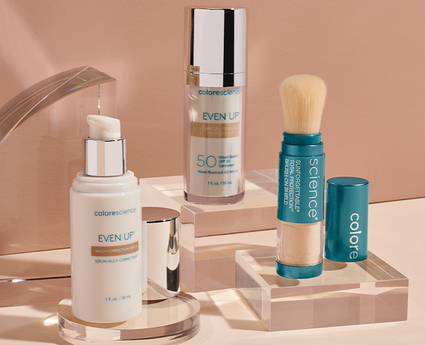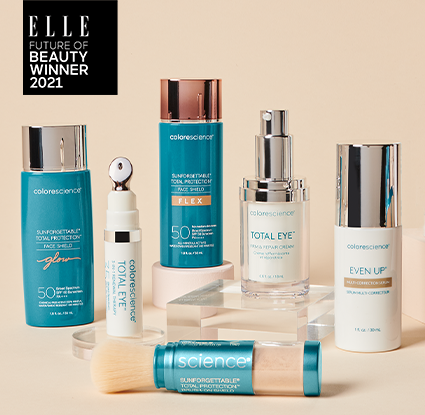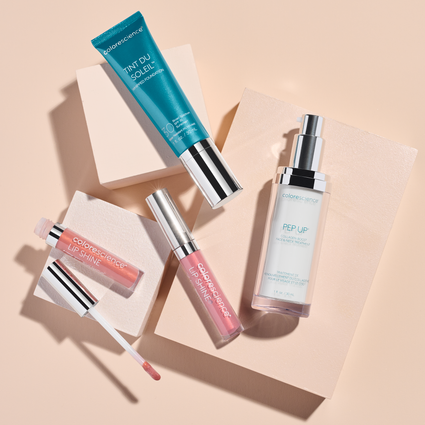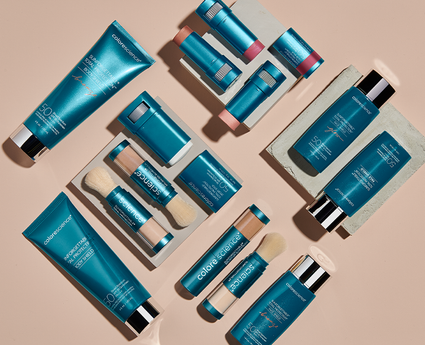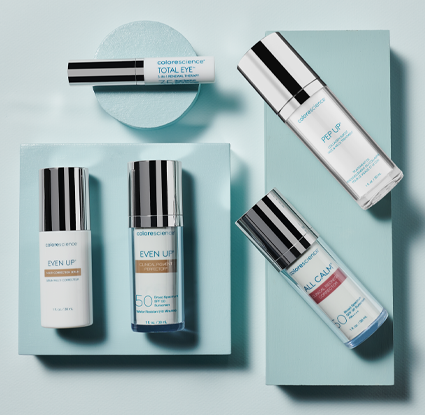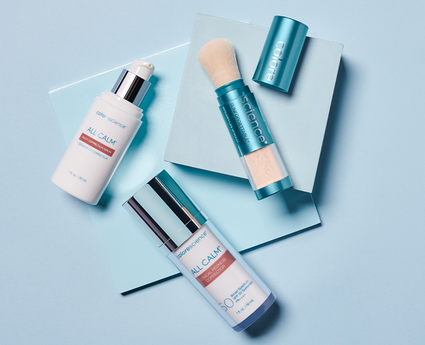How to Keep Skin Hydrated: 17 Essential Tips
Skin that's hydrated looks soft and supple and keeps you looking more youthful.
However, there are a lot of factors that come into play when it comes to keeping your skin and body hydrated. And sometimes, that’s not so easy to keep on, leaving your skin looking dull and feeling dry.
Fortunately, with some tips for preventative maintenance and a solid skincare routine, you can turn things around.
Putting in the extra effort to keep your skin hydrated pays off in the short- and long-term as your skin ages better, acne is less likely to be a problem, and you'll put off the appearance of fine lines and wrinkles for longer.
You don't have to make drastic changes in your life to prevent dry skin. The following tips are easy to integrate into your daily routine and can pay off if you stick to them. Keep reading or use the links below to learn more about how to keep dry skin hydrated and youthful-looking.
- 5 Tips for Keeping Your Skin Hydrated
- 12 Things to Do to Prevent Dry Skin
- How to Tell If You Have Dry Skin
- How to Repair Dry Skin
5 Tips for Keeping Your Skin Hydrated
The following five tips are a great start for how to keep skin hydrated and looking healthy. You get the most benefit from these tips when you practice them consistently.
In some cases, you may find that you need to switch skincare products for the best results, but overall, the actions outlined in these tips are easy to integrate. They can help hydrate aging skin and keep the side effects of dry skin at bay.
Once you get started, we think you’ll find that they’re well worthwhile to keep up with.
1. Drink Enough Water
Drinking water doesn't directly transfer moisture to your skin. But it does help keep moisture in your cells and can make your skin appear more plump.
When you're dehydrated or not drinking enough water in general, your cells deflate and cause your skin to look dry and papery. So make sure to keep up with your daily water intake. Electrolytes can also help by making it easier for your body to retain the water you drink.

2. Use Hydrating Skin Care
Hydrating skin care treatments work by creating a barrier that prevents water loss. A hydrating skincare product will often have humectants such as hyaluronic acid and glycerin transfers moisture from the air and from within your body to keep your skin moisturized.
3. Get Sufficient Sleep
The body does a lot of maintenance while you're at rest and rebalances the skin's moisture by sweating more during sleep. It’s important to get a solid eight hours of sleep, so your body can benefit from these natural processes.
If you're not getting enough sleep, it can interfere with your skin’s ability to hydrate properly. If you notice your skin is drier than normal, you might want to adjust your sleep schedule and focus on getting quality rest.
4. Always Wear Sunscreen
Sunscreen protects your skin from the damaging effects of UV rays from the sun. Exposure to UV rays can pull the water from your skin as you sweat. It also damages your skin at the cellular level, which can cause a host of other issues.
However, sunscreens aren’t all created equal, and using one with harsh ingredients can also dry out your skin. When shopping for sunscreen, make sure it includes gentle, hydrating ingredients.
5. Use a Humidifier
Dry air pulls moisture from your skin, and your body works harder to overcome the lack of ambient humidity. The above preventative measures go a long way towards keeping your skin hydrated, but they can't overcome the weather or local climate.
Using a humidifier keeps your immediate environment humid and delivers the moisture your skin needs for proper levels of hydration.
While all of these tips are helpful to implement on their own, when you follow them all at once, they can have a greater impact. However, if you need to, start small and scale your way up to introducing all five of our recommendations into your daily routine.
Before you know it, dry patches will start to give way to smooth, healthier-feeling skin. However, if your dry skin is persistent or especially painful, it may be time to schedule a visit with your dermatologist for specialized help and a personalized treatment plan.
Now that you have a better idea of how to keep your skin hydrated, let’s talk about prevention.
12 Things to Do to Prevent Dry Skin
You can't easily change your environment or avoid the effects of cold weather on your skin, but you can avoid partaking in activities that increase your risk of dry skin.
All of the following tips can help you keep your skin from becoming dry in the first place:
- Lower the temperature of your showers or reduce the amount of time you spend in the shower. In case you didn’t know, hot water can make your skin drier.
- Use a moisturizer that contains humectants.
- Use a peptide serum that's designed to help skin repair itself.
- Don't use a loofah or scrubber to remove dead skin cells. Instead, try a soft, clean towel.
- Use an alcohol-free skin cleanser. If you didn’t know, alcohol is known to dry out the skin.
- Use cortisone cream on itchy areas to prevent further skin damage and allow your skin to heal.
- Avoid products with a fragrance to reduce your risk of developing a case of skin-drying contact dermatitis.
- Apply moisturizer to your face as soon as you get out of the bath or shower.
- Use soaps that have moisturizing properties and are free of fragrances or other harsh ingredients.
- Quit smoking if it’s something you often do. One of the long-term effects of smoking is dry skin.
- Pat skin dry instead of rubbing. Harsh treatment of your skin can be damaging.
- Stand or sit further away from heat sources.
Some of these are easier to do than others, but even small steps can help you prevent dry skin.
How to Tell If You Have Dry Skin
In some cases, dry skin is obvious. However, when it’s in the early stages of dryness, it might be harder to tell.
We’ve outlined some of the signs that you might have dry skin below so that you can take steps to hydrate as soon as possible.
Some of the most common signs of dry skin include:
- Flaky patches
- Feels tight
- Rough texture
- Itchiness
- Flaking skin of varying severity
- Scaling or peeling of varying severity
- Fine lines that may deepen into cracks
- Cracks that can bleed
You might experience different symptoms depending on the time of year, your local climate and working environment, your skin type and tone, and your age. However, if you see any of these signs, you might want to start implementing the tips we provided for how to keep skin hydrated.

How to Repair Dry Skin
Dry skin is something that can happen to anyone, even when they've been taking preventative steps. It's not something to be ashamed of, nor does it indicate a lack of skin care. It might indicate that you need to switch to a different moisturizing ingredient, change something in your skincare routine, or add another round of moisturizer during the day.
In the meantime, you need to get on top of dry skin once it appears in order to stop the condition from getting worse. Some effective tips for repairing dry skin include:
Use moisture barriers
Thick creams and oils cover your skin in a protective layer, draw moisture to your skin, and can slow down the loss of moisture in dry conditions.
Lotions tend to be too thin and absorbed too quickly into the skin to be effective over a long period of time. Creams and oils are heavier and thicker, which usually means they provide a long-lasting active barrier before you need to reapply.
As with all other skincare treatments, be sure to look at the ingredients. You don’t want to use something that’s going to clog your pores and result in a skin-irritating breakout. When shopping for moisturizers, you want to look for something that’s non-comedogenic.
This isn’t just a way to keep your face skin hydrated, it can also be helpful for all areas of the body.
Update your skincare routine
Adjusting your skincare routine can help you inject some extra moisture into your skin. Above and beyond moisture barriers, you may want to focus on cutting out any products that can have drying effects, like acidic treatments, for a short period.
You might also introduce a hydrating face wash, do special masks that are meant to moisturize, and add other steps that directly target the dry skin issues you’re facing.
Be extra gentle with your skin
When your skin is dry, you need to give it some extra TLC. This can mean switching to softer pillowcases, taking care when wiping your face after washing, and avoiding hot showers and water altogether.
Healing dry skin might take a bit of time, but this is where the importance of skin care comes into play and has a major positive impact on your complexion.
Get Healthy, Hydrated Skin
The best way to keep skin hydrated will vary from person to person. But these tips can help you avoid issues that lead to dryness and repair dry skin when it becomes a problem.
You don't have to make radical changes to your skincare routines, and you can still wear your favorite makeup products even when you're experiencing dry skin. It might just require a bit of extra effort, but your future self will thank you.
If you’re looking for an easy way to care for and prevent dry skin, try our hydrating mist that you can use before you put on your makeup, as a layer on top of your foundation, and after you've finished.
Our hydrating mist features D20 Heavy Water as a humectant, chamomile to calm irritated skin, and ylang-ylang to guard against acne-causing bacteria. Try it today and experience first-hand how it can change your skincare routine for the better.

